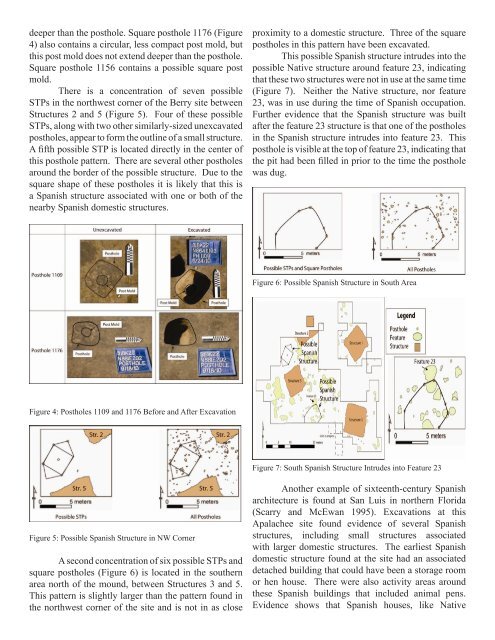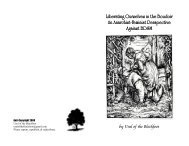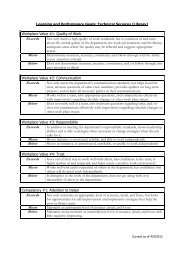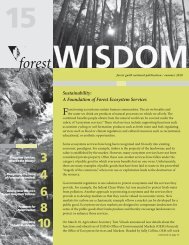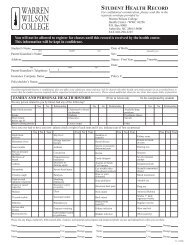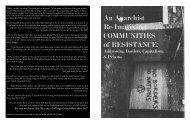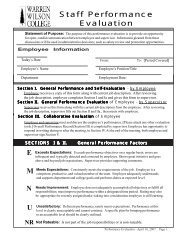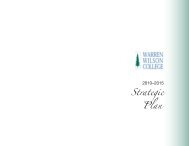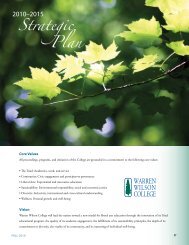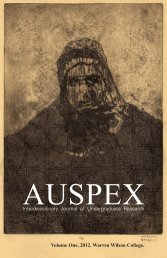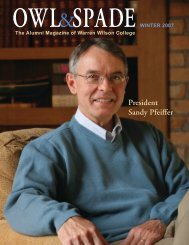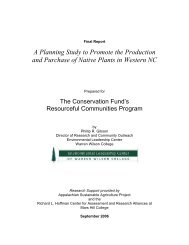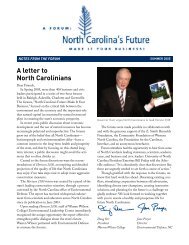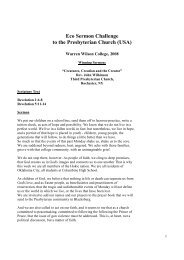Native American and Spanish Ancillary Structures - Warren Wilson ...
Native American and Spanish Ancillary Structures - Warren Wilson ...
Native American and Spanish Ancillary Structures - Warren Wilson ...
Create successful ePaper yourself
Turn your PDF publications into a flip-book with our unique Google optimized e-Paper software.
deeper than the posthole. Square posthole 1176 (Figure<br />
4) also contains a circular, less compact post mold, but<br />
this post mold does not extend deeper than the posthole.<br />
Square posthole 1156 contains a possible square post<br />
mold.<br />
There is a concentration of seven possible<br />
STPs in the northwest corner of the Berry site between<br />
<strong>Structures</strong> 2 <strong>and</strong> 5 (Figure 5). Four of these possible<br />
STPs, along with two other similarly-sized unexcavated<br />
postholes, appear to form the outline of a small structure.<br />
A fifth possible STP is located directly in the center of<br />
this posthole pattern. There are several other postholes<br />
around the border of the possible structure. Due to the<br />
square shape of these postholes it is likely that this is<br />
a <strong>Spanish</strong> structure associated with one or both of the<br />
nearby <strong>Spanish</strong> domestic structures.<br />
Figure 4: Postholes 1109 <strong>and</strong> 1176 Before <strong>and</strong> After Excavation<br />
Figure 5: Possible <strong>Spanish</strong> Structure in NW Corner<br />
A second concentration of six possible STPs <strong>and</strong><br />
square postholes (Figure 6) is located in the southern<br />
area north of the mound, between <strong>Structures</strong> 3 <strong>and</strong> 5.<br />
This pattern is slightly larger than the pattern found in<br />
the northwest corner of the site <strong>and</strong> is not in as close<br />
proximity to a domestic structure. Three of the square<br />
postholes in this pattern have been excavated.<br />
This possible <strong>Spanish</strong> structure intrudes into the<br />
possible <strong>Native</strong> structure around feature 23, indicating<br />
that these two structures were not in use at the same time<br />
(Figure 7). Neither the <strong>Native</strong> structure, nor feature<br />
23, was in use during the time of <strong>Spanish</strong> occupation.<br />
Further evidence that the <strong>Spanish</strong> structure was built<br />
after the feature 23 structure is that one of the postholes<br />
in the <strong>Spanish</strong> structure intrudes into feature 23. This<br />
posthole is visible at the top of feature 23, indicating that<br />
the pit had been filled in prior to the time the posthole<br />
was dug.<br />
Figure 6: Possible <strong>Spanish</strong> Structure in South Area<br />
Figure 7: South <strong>Spanish</strong> Structure Intrudes into Feature 23<br />
Another example of sixteenth-century <strong>Spanish</strong><br />
architecture is found at San Luis in northern Florida<br />
(Scarry <strong>and</strong> McEwan 1995). Excavations at this<br />
Apalachee site found evidence of several <strong>Spanish</strong><br />
structures, including small structures associated<br />
with larger domestic structures. The earliest <strong>Spanish</strong><br />
domestic structure found at the site had an associated<br />
detached building that could have been a storage room<br />
or hen house. There were also activity areas around<br />
these <strong>Spanish</strong> buildings that included animal pens.<br />
Evidence shows that <strong>Spanish</strong> houses, like <strong>Native</strong>


